Introduction
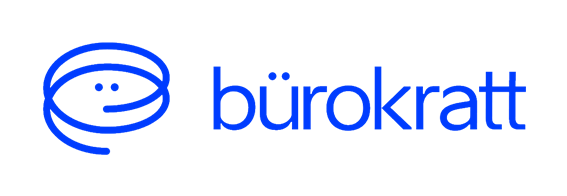
The use of artificial intelligence (AI) in the public sector is one of the European Commission’s key priorities to create a resilient Europe in the Digital Decade. Through the Coordinated Plan on Artificial Intelligence (updated in 2021), Member States are incentivised to accelerate investment, act on AI strategies and programmes, and align their AI policy to avoid fragmentation at the global level.
In Estonia, the uptake of AI has stepped up since 2018. Following the government investment in AI and the proposals of the expert group led by the Ministry of Economic Affairs and Communications (Majandus- ja Kommunikatsiooniministeerium or MKM), the government adopted Estonia’s national AI strategy in July 2019. With an investment of EUR 10 million, the strategy supports the adoption of AI in the public and private sectors, increase digital skills, fund research & development (R&D) and adapt the legal environment to the new challenges brought by AI.
In Estonia, kratt is often used to describe an AI system, named after a magical creature in the country’s mythology and as a metaphor for the advantages and risks the AI technology can carry. To facilitate the reuse of AI in government agencies, the MKM created the concept of kratijupid, open source AI components that can be reused by the public and private sectors. In April 2022, the Estonian government approved the 2022-2023 strategy, which includes further developing the kratijupid.
These components serve as the foundation for the creation of Estonia’s government virtual assistant: Bürokratt. In development since 2020 and with the launch of the first official version in 2022, Bürokratt aims to offer a “single, united channel for accessing public direct and informational services”, granting citizens easier access to simplified digital public services. The goal is to benefit from the widespread use of mobile devices and the internet to access public services more easily and efficiently.
Bürokratt
The open source solution Bürokratt is a digital assistant that uses AI to establish an interoperable network of solutions, allowing citizens to perform various public service procedures through a single platform. The conception of Bürokratt followed the release of proposals on advancing the take-up of AI by the MKM. Legitimised by Estonia’s national AI strategy, Bürokratt is envisioned as the way “public services should digitally work in the age of artificial intelligence (AI)”.
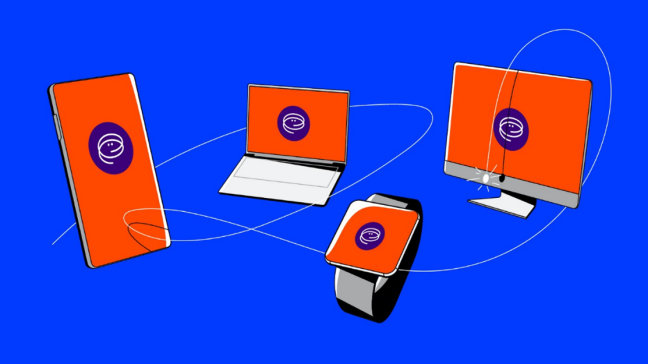
The AI and open source components of Bürokratt
With the successful test of Bürokratt in 2021 and the launch of the first full version in 2022, the goal of the MKM is to further integrate additional features. These will, among others, help conduct a myriad of public services and assist citizens through a voice-interactive virtual assistance using various devices and communication channels. Other features that the platform seeks to offer include voice recognition, enhanced security, data deduplication, and simplified authentication which will allow the different services to run separately from the generic functions of the platform. Bürokratt has already integrated the following primary components:
- Neurotõlge, an open source machine translation engine developed under the MIT Licence that supports seven languages (Estonian, Latvian, Lithuanian, English, Finnish, German, and Russian) and was developed in cooperation with the University of Tartu. Neurotõlge uses natural language processing techniques (NPL) to combine computational linguistics with statistical and machine learning models.
- Neurokõne, the text-to-speech tool developed under the MIT License, with speech synthesis sounds based on neural networks and trained by Estonian news resources. Developed by the Natural Language Processing research group of the University of Tartu, the tool can portray the natural sound and intonation of speech. Its repository is available on GitLab.
- Texta Toolkit, a text analytics tool developed under the GNU General Public License that is used by public agencies to improve the efficiency of work processes and automatise routine activities through machine learning using MultiLingual Preprocessor (MLP) techniques. The source code for Texta Toolkit is available on GitLab.
- Kaldi, the web-based speech-to-text tool[1] that uses deep neural networks (DNN) and speaker diarisation models to segment and co-index audio recordings. It was developed by the Tallinn University of Technology and it was introduced in the Estonian Parliament (Riigikogu) to create transcripts of the sittings.
- One of the main features of Bürokratt, the chatbot, is currently available as a prototype under the MIT Licence and developed based on the data of the State Information System Board and the Police and Border Guard Board. Although the source code is available on GitLab, the access is limited to users with an Estonian eID.
The MKM has also set up a repository on GitLab with documentation on Bürokratt’s high-level architecture and front-end components.
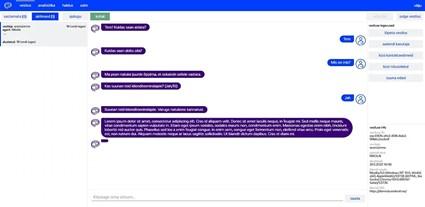
Key milestones of Bürokratt
- In 2019, Estonia kicked off its national AI Strategy 2019-2021. In the report of Estonia’s AI Taskforce released in May 2019, the concept of Bürokratt was presented as a step to ensure the interoperability between the applications based on AI technologies (kratts) and the creation of a virtual assistant for the e-state.
- In 2020, the vision and concept paper for Bürokratt outlined the purpose of the tool, as well as the features and technical requirements the MKM committed to integrate and address. In 2020, the MKM also carried out the first pilot projects for Bürokratt.
- Throughout 2021, the MKM focused on developing the speech-enabled pilot projects, the machine translation and speech recognition features, with the development of the core solution kicking off in the second semester of the year. Most of the projects planned for the year were completed, including conducting 80 case studies in the public sector.
- For 2022, the MKM plans to roll out the full version of the Bürokratt platform, with the implementation of the chat function and bot. By the end of the first quarter, citizens had access to the first public services available by selected agencies through the tool.
The development and promotion of Bürokratt
Following the release of the concept and vision paper in 2020, the MKM carried out various actions to ensure the viability of the project. These actions included solving the core technology and business requirements, developing a proof-of-concept, identifying technological alternatives, and preparing the development roadmap, to assess the possibility of delivering Bürokratt, in full. The development of the platform relied on a core team of 12 people, thanks to the collaboration of the MKM with the State Information System Authority, in partnership with the Institute of Estonian Language and the Ministry of Education and Research. Private sector companies like Texta, Stacc, Microsoft, and Solita also provided technical support to develop the tool. The Estonian company Net Group in particular, has been significantly involved in the architecture and design phases of the project, being responsible for developing the algorithm that answers the users’ questions.
The MKM carries out bi-monthly meetings with government agencies to have an overview of the AI projects that are being carried out and are eligible for funding. The funding for each project averages between EUR 50.000 to 60.000 although the use of readily available basic AI open source components helps lowering costs as the components only require to be adapted to the needs of the organisation. According to Ott Velsberg, Government Chief Data Officer of the MKM, public administrations that wish to cooperate with the MKM on AI projects solely need to contact the Ministry to initiate the process.
The MKM planned a total of 6500 hours for the development of the base platform and overall, the Estonian government has spent EUR 1.5 million on Bürokratt, with the plan to spend close to EUR 13 million in the next four years. To assess the profitability of this long-term spending in AI projects, public administrations can get an estimate of the profitability of using Bürokratt through the Bürokratt Profitability Calculator.
AI as a tool to facilitate public services
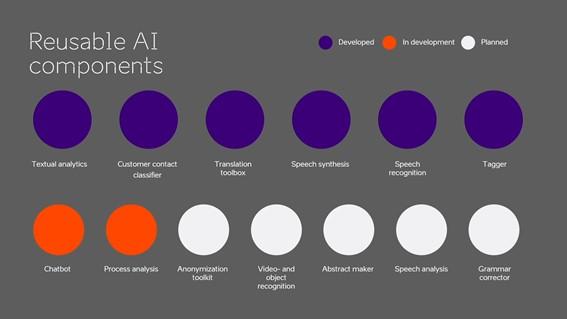
An extensive number of Estonian public agencies and institutions are currently implementing or have fully implemented Bürokratt components in their services. By the end of 2020, 41 AI solutions had been deployed in the government sector and companies of the private sector were also using kratts to improve their own business processes. In November 2021, more than 30 organisations had carried out over 80 AI projects using these components.
For example, Bürokratt components have been used to develop forecast models in the Tax and Customs Board and Estonian Health Insurance Fund and machine learning algorithms have been adopted by the Information Technology Centre of the Ministry of the Environment to support the identification of tree species and recording of forest resources. By the end of 2021, an alpha version of Bürokratt was implemented in three agencies: the Police and Border Guard Board, the Consumer Protection and Technical Regulatory Agency, and the National Library. According to Ott Velsberg, the three agencies allowed the MKM to observe different ways to implement Bürokratt based on the organisational relationship with Ministry and the in-house IT competence. During Q2 of 2022, the agencies were moving towards the beta version of Bürokratt and citizens were able to have their messages forwarded and processed using AI technologies.
Bürokratt in 2022
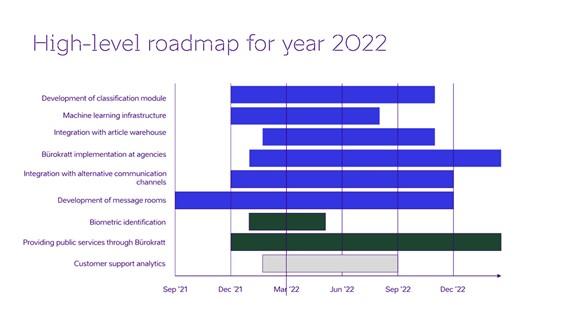
In 2022, the MKM aims to continue onboarding public agencies and implement their projects on the Bürokratt platform. To add the main envisioned functionalities, the development team is working further on the dialogue-based system, the speech recognition and synthesis capabilities, creating personalised services for both the public and private sectors and continuing the development of the government mobile application and communication channels. Until the end of the year, the government hopes to create 10 interoperable and personalised public services and to develop a customer contact classification module to correctly forward citizens’ inquires. The system should be interoperable with the systems in other countries, such as Finland and its AuroraAI platform.
According to Ott Velsberg, Bürokratt’s roll out has progressed well, in spite of some minor setbacks that have delayed the original development timeline by one month. Although access to the alpha version of the platform is still limited, the response from agencies has been positive and network meetings already allow the MKM to receive feedback based on the experiences of the current users. Estonian citizens and open source enthusiasts can expect to meet a solution that grants effortless interactions with public administrations.
POLICY CONTEXT
For information regarding the policy context of the use of open source software in the public sector in Estonia, please consult the respective Country Intelligence Report on OSS policies and its corresponding factsheet in the OSOR Knowledge Centre. It includes a detailed overview of the political actors, strategic players, political and legislative initiatives, and public sector open source software initiatives in Estonia.
[1] Kaldi is provided under a customised license that allows for its use and redistribution in source and binary forms, with or without modification, but the name of the author may not be used to endorse or promote products derived from the software without specific permission.

